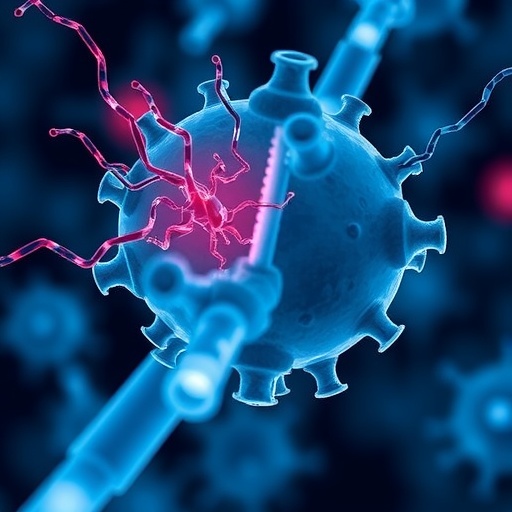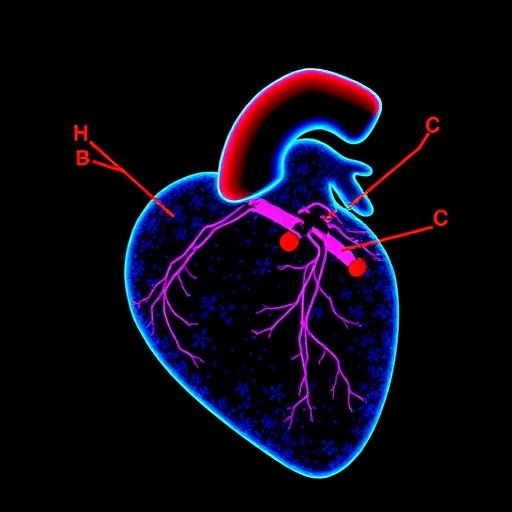Iron deficiency anemia remains one of the most pervasive nutritional challenges worldwide, affecting a vast portion of the population, with women bearing the brunt of this condition. In Europe alone, one in five women suffer from iron deficiency, a condition that manifests in debilitating symptoms such as persistent fatigue, chronic headaches, and a compromised immune system. Addressing this widespread health issue, researchers led by ETH Zurich’s Professor Raffaele Mezzenga have made a significant breakthrough with the development of a novel dietary supplement designed specifically to enhance iron absorption efficiently and safely. Co-led by Michael B. Zimmermann, professor emeritus at ETH Zurich, the team’s pioneering work introduces a new form of iron supplementation utilizing protein nanotechnology, detailed in their recent publication in the journal Nature Food.
The cornerstone of this innovative supplement is its unique composition: edible oat protein nanofibrils coated with iron nanoparticles. This nano-engineered compound is revolutionary not only because it leverages a plant-based protein matrix but also due to its superior bioavailability. Unlike conventional iron supplements that predominantly use iron sulfate—known for its limited absorption and unpleasant metallic aftertaste—this new formulation reportedly doubles the iron absorption rate. This remarkable finding was substantiated through a rigorous clinical trial conducted in Thailand, involving 52 women aged 18 to 45 years who were diagnosed with anemia attributed to iron deficiency. The study’s outcomes confirmed that this oat protein-based iron supplement was significantly more effective at replenishing iron levels.
One of the standout advantages of this new supplement lies in its compatibility with vegetarian and vegan diets. Given that iron from animal sources is generally more bioavailable than plant-based iron, individuals avoiding meat are more susceptible to iron deficiency. Professor Mezzenga highlights the protective potential of this novel supplement for these populations, as it bridges the absorption gap often experienced by vegetarians and vegans. This aspect makes the new iron compound a game-changer in the effort to reduce nutritional gaps related to iron deficiency across diverse dietary preferences.
Furthermore, sensory acceptability is a crucial factor influencing consumer adherence to iron supplements. Common iron sulfate supplements are notorious for imparting a metallic aftertaste and altering the food’s color, discouraging consistent use. In contrast, the oat protein iron nanofibrils are tasteless and colorless, enabling seamless integration into a variety of foods and beverages without any disruptive effects on flavor or appearance. According to Jiangtao Zhou, the study’s lead author and a former postdoctoral researcher under Mezzenga, this characteristic is instrumental in enhancing consumer compliance and overall supplement efficacy.
Ease of administration also defines the practicality of dietary supplements, particularly when catering to a broad demographic. This novel iron compound exhibits remarkable versatility—it can be dissolved directly in water or juice, or easily mixed into foods such as muesli without compromising efficacy. However, data from the clinical study indicate that the optimal mode of intake is when the supplement is dissolved in water, maximizing the bioavailability of iron during digestion, thereby facilitating superior absorption and therapeutic outcomes.
Iron intake recommendations also underscore the relevance of this innovation. The daily iron requirement varies among individuals, with premenopausal women requiring approximately 18 milligrams per day due to menstruation-related losses, while men generally require 11 milligrams. Despite these guidelines, a significant portion of the population—around 15% of men and a larger segment of women—still struggles to meet their iron needs, often resorting to supplements that fail to deliver adequate absorption. In conditions of severe deficiency, iron infusions are sometimes necessary, highlighting the urgent need for more efficient oral iron formulations like the one developed by Mezzenga’s team.
The scientific foundation of this provocation lies in the technology originally crafted using animal proteins, which was later expanded to encompass all food protein sources, including plants. This broader patent coverage facilitates scalability and adaptation to a plant-based platform, fundamental to meeting global demands sustainably. The patent protection, now secured in Europe and the United States, safeguards the proprietary methodology and opens pathways for commercial development and regulatory approval as a dietary supplement.
Looking ahead, Professor Mezzenga and collaborators envision a future where iron-enriched oat protein nanofibrils are just the beginning. They aim to harness this nanofibril technology for delivering other critical micronutrients such as zinc and selenium, both essential for immune function and metabolic health. Given the relatively lower regulatory thresholds for dietary supplements compared to pharmaceutical drugs, the team anticipates expedited commercialization, potentially revolutionizing micronutrient supplementation strategies worldwide.
This breakthrough emerges at a pivotal time in global health, where nutrient deficiencies remain a formidable challenge affecting billions. The nanostructured iron delivery method exemplifies the marriage of advanced material science with nutritional therapeutics, showcasing how molecular innovation can lead to tangible health benefits. Its formulation’s stability, high absorption rate, and consumer-friendly sensory profile collectively position it as a frontrunner in the next generation of iron supplements.
Moreover, the implications for public health are profound. By dramatically improving iron bioavailability and providing a palatable, plant-based option, this new supplement can help close the gap in iron deficiency prevalence internationally. It addresses key factors contributing to poor supplement adherence, such as taste and gastrointestinal side effects, and ensures that iron repletion is both effective and accessible.
In conclusion, the oat protein nanofibril–iron hybrid supplement represents a landmark advancement in dietary supplementation technology. With its successful clinical validation and favorable sensory and absorption properties, it presents a compelling solution to combat iron deficiency anemia globally. The multidisciplinary approach embodied by this research paves the way for developing similarly sophisticated delivery systems targeting other essential minerals, which may soon redefine nutritional medicine in the 21st century.
Subject of Research: Development and clinical evaluation of oat protein nanofibril–iron hybrids for improved iron supplementation.
Article Title: Oat protein nanofibril–iron hybrids offer a stable, high-absorption iron delivery platform for iron fortification
Web References:
10.1038/s43016-025
Keywords: Iron deficiency, anemia, oat protein nanofibrils, iron nanoparticles, dietary supplements, iron absorption, plant-based iron, nanotechnology, micronutrient supplementation, bioavailability, vegetarian nutrition, dietary iron fortification
Tags: addressing nutritional challenges worldwidechronic fatigue and iron deficiencyclinical trials for iron supplementsenhanced iron bioavailabilityETH Zurich research breakthroughsinnovative treatments for women’s healthiron-deficiency anemia solutionsnovel dietary supplements for iron absorptionoat protein nanofibrils in dietplant-based iron supplementationprotein nanotechnology in nutritionsafe iron supplementation methods





